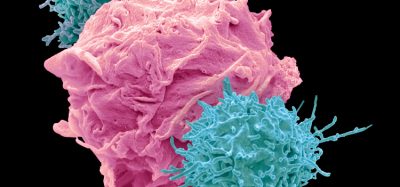Elevated TMAO levels predict future risk of CKD
Posted: 11 April 2024 | Drug Target Review | No comments yet
Elevated levels of trimethylamine N-oxide levels were a stronger indicator of CKD risk than the well-known risk factors.


Researchers at the Cleveland Clinic and Tufts University have identified that high blood levels of trimethylamine N-oxide (TMAO) predicts future risk of developing chronic kidney disease (CKD), a growing global public health issue affecting around 10 to 15 percent of the population, over time. These findings build on over a decade of research led by Dr Stanley Hazen, related to the gut microbiome’s role in cardiovascular health and disease. This includes the negative effects of TMAO, a byproduct formed by the gut bacteria from nutrients abundant in red meat, eggs and other animal source foods.
In the large-scale study, the blood levels of TMAO were measured over time in two large National Institutes of Health populations. Then, the kidney function of over 10,000 US adults with normal kidney function at baseline over an average follow-up period of 10 years was followed. The researchers discovered that participants with higher TMAO blood levels had an increased risk for future development of CKD.
Elevated TMAO levels were also associated, independent of sociodemographic characteristics, lifestyle habits and other known CKD risk factors, with a faster rate of declining kidney function in people with normal or impaired kidney function at baseline. Furthermore, the results are consistent with earlier reported preclinical model studies demonstrating that TMAO directly fosters both kidney functional decline and tissue fibrosis.
“The findings indicate a remarkably strong clinical link between elevated TMAO and increased risk for developing chronic kidney disease”
Dr Hazen, chair of the Department of Cardiovascular and Metabolic Sciences and at Cleveland Clinic’s Lerner Research Institute and co-section head of Preventive Cardiology in the Heart, Vascular & Thoracic Institute, explained: “The findings indicate a remarkably strong clinical link between elevated TMAO and increased risk for developing chronic kidney disease…The results are from individuals of diverse ethnic and sociodemographic backgrounds who had normal kidney function at the start. The diversity of the participants helps ensure the results are generalisable.”
The study showed that TMAO levels were as strong or even stronger an indicator of CKD risk than the well-known risk factors like diabetes, hypertension, advancing age and race. It also reinforces the growing evidence showing that lowering TMAO with prescribed drugs could be an effective treatment in patients at risk for, or with early signs of, kidney disease.
“TMAO levels are highly modifiable by both lifestyle-like diet and pharmacologic interventions.”
“Our study is a crucial complement to studies in preclinical models supporting TMAO as a novel biological risk factor for chronic kidney disease,” said Dr Meng Wang, research assistant professor at the Friedman School of Nutrition Science and Policy at Tufts University. “TMAO levels are highly modifiable by both lifestyle-like diet and pharmacologic interventions. Besides using novel drugs to lower TMAO in patients, using dietary interventions to lower TMAO in the general population could be a cost-efficient and low-risk preventive strategy for chronic kidney disease development.”
Future studies aim to examine genetic data to assess the potential cause-and-effect relationship between TMAO and CKD, as well as studying more definitively whether lifestyle changes may prevent CKD development and progression.
This study is published in Journal of the American Society of Nephrology.
Related topics
Biomarkers, Disease Research, Drug Targets, Microbiome
Related conditions
Chronic kidney disease (CKD)
Related organisations
Cleveland Clinic, Tufts University








